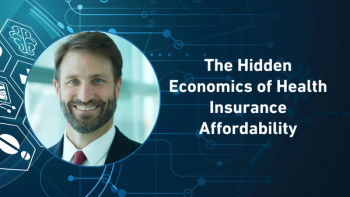
Financially Supporting Pharma Innovation
Leaders in the space discuss aspects of experimental drug support and more at this year’s US Pharma and Biotech Summit.
It’s no secret that the funding of ground-breaking developments does not come cheap, but where in fact do these aforementioned funds come from?
The Financial Times’ US Pharma and Biotech Summit 2024 in New York City carried on with a leaders’ panel centered around “Funding pharma and biotech innovation,” which was moderated by Oliver Barnes, a US pharmaceutical and biotech correspondent with Financial Times. He was joined by Simeon George, CEO and managing partner, SR One Capital Management; Ken Keller, chairman of the board, president, and CEO, Daiichi Sankyo, Inc.; and James Sabry, global head of pharma partnering, Roche.
The session focused on key aspects of experimental drug support, including the factors that are influencing new therapy development; the competitiveness of the biopharma sector; creative ways that biotech companies are demonstrating the value of investments; obstacles surrounding partnerships and acquisitions; and ways that companies can scale up for the successful delivery of treatments to patients, while also providing an ROI to investors.
It began with a question raised by Barnes: is this health of biopharma innovation right now healthy?
“It's incredibly healthy,” noted Keller. “Our company works mainly in the oncology field, and you will see the same of care change and a number of different tumor types, along with every single meeting you go to. So in a company like Daiichi Sankyo, we actually have more decisions to make today in terms of what we want to bet on, than, at least in my experience, in the last 20 years.”
The next point of contention was the concept of capital. Is there enough of it at the moment, and is it freely available?
“In my opinion, firstly, the future belongs to the innovators, not because it's just innovative. That is not the answer is innovative drugs unlock unusual value of efficacy and safety, and convenience for patients,” commented Sabry. “The future belongs to the innovators because the innovators are going to unlock value for patients, and if we go back to the question about capital, I think there is enough. The reason is that if you look at 10-15 years ago in the industry, there was a fair amount of capital that went to drugs that were just simply copies of the old ones; you could build a reasonable franchise, by ‘me too’ medicine. In fact, there were many companies—some small, some large—that did that. That doesn’t exist anymore. You have to innovate now because the healthcare system can't afford a second drug that is not differentiated from the first drug, it has to be different.”
Indeed, industry is seeking out more broadly-based, inflection-point mass drugs. When one thinks about investments on the venture side of the equation, a “blockbuster” drug isn’t only a billion-dollar drug anymore, but rather a multi-billion-dollar franchise. However, there are However, there are exceptions to this, as it also depends on the industry in which the drug launches.
“I think the reality is, it is incredibly hard to develop a medicine for any market in the process— the level of serendipity, the level of care and thought, leadership, courage—there's so many steps along the way where things can fail,” outlined George. Frankly, just being able to work on a drug that can have patient impact is the reason why we exist. At SR One, we actually look at markets that can range from a few hundred million dollars but truly fit an unmet need for a particular patient—whether it’s in a rare disease, a genetically-driven disease, cancer, autoimmune, neurology—all the way through the larger markets. We are looking for drug hunters, entrepreneurs, founders that have a vision for how they can solve a meaningful clinical unmet need, and that's where we focus our time.”
Sabry echoed that sentiment, while making the point that there is practically no drug that has gone from merely a concept smoothly through all aspects of discovery, early clinical development, late-stage clinical manufacturing, and commercialization, but rather they have all had to deal with their share of obstacles along the way.
Reference
Barnes O, George S, Keller K, Sabry J. Funding pharma and biotech innovation. May 16, 2024. US Pharma and Biotech Summit 2024. New York.
Newsletter
Stay ahead in the life sciences industry with Pharmaceutical Commerce, the latest news, trends, and strategies in drug distribution, commercialization, and market access.




